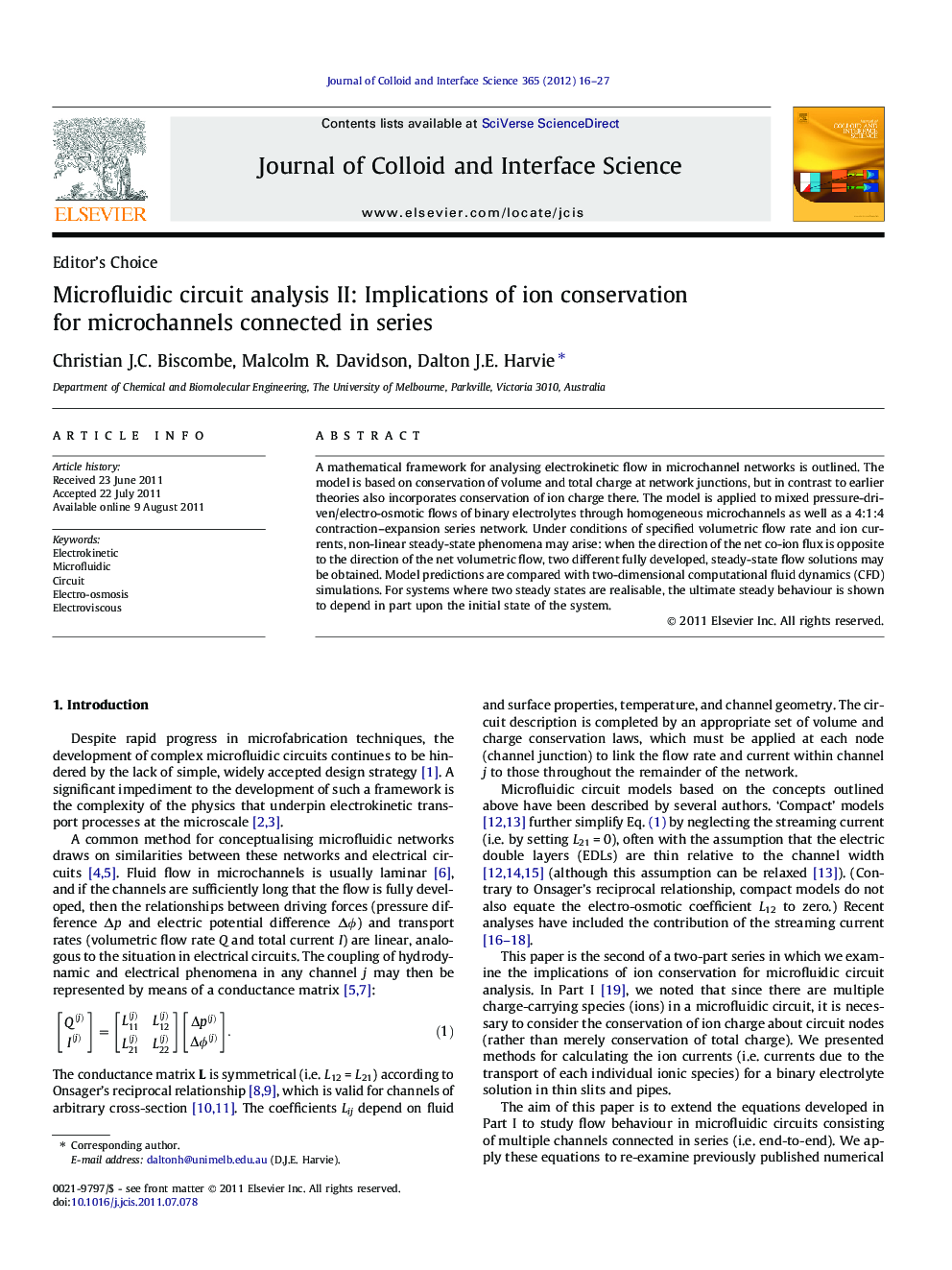| Article ID | Journal | Published Year | Pages | File Type |
|---|---|---|---|---|
| 608444 | Journal of Colloid and Interface Science | 2012 | 12 Pages |
A mathematical framework for analysing electrokinetic flow in microchannel networks is outlined. The model is based on conservation of volume and total charge at network junctions, but in contrast to earlier theories also incorporates conservation of ion charge there. The model is applied to mixed pressure-driven/electro-osmotic flows of binary electrolytes through homogeneous microchannels as well as a 4:1:4 contraction–expansion series network. Under conditions of specified volumetric flow rate and ion currents, non-linear steady-state phenomena may arise: when the direction of the net co-ion flux is opposite to the direction of the net volumetric flow, two different fully developed, steady-state flow solutions may be obtained. Model predictions are compared with two-dimensional computational fluid dynamics (CFD) simulations. For systems where two steady states are realisable, the ultimate steady behaviour is shown to depend in part upon the initial state of the system.
Graphical abstractWhen co-ions move against the flow in a microchannel network, different fully developed, steady-state flow solutions may arise even if the flow rate and total current are fixed.Figure optionsDownload full-size imageDownload high-quality image (94 K)Download as PowerPoint slideHighlights► Each channel within a circuit may have a different reference ion concentration. ► These concentrations are related by conservation of volume and ion currents. ► A single channel may have two flow solutions for a set flow rate and pair of ion currents. ► A complex circuit may have many flow solutions for the same inlet/outlet conditions.
